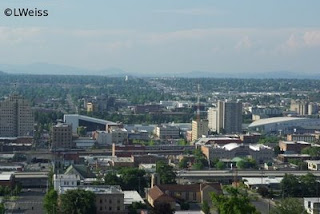Silent Snows

Snowy mornings have a special kind of quiet. Grey clouds above roll along with only the lonesome sounds of a wintery breeze pushing them forward. Standing near a field or line of bushes, little rustle is heard -- just the silence of of a new snowfall. As snow fall covers the ground and sticks to the roads, even the passing cars drift by silently. It's a snowy winter morning along Lines West, the location is Rosalia, WA. The old tilted rectangle of America's Resourceful Railroad still clings to the bridge side -- just barely. Located on the south side of the old structure, it has been subject to direct sun for many many years and they show. Just out of frame to the left is the old electrified interurban from Colfax. At one time Rosalia hosted the transcontinental Milwaukee Road, the electrified Great Northern (who purchased the interurban), and the Northern Pacific line from Spokane to Lewiston. The three big northwest players all in one small town, out amongst the hill...
























